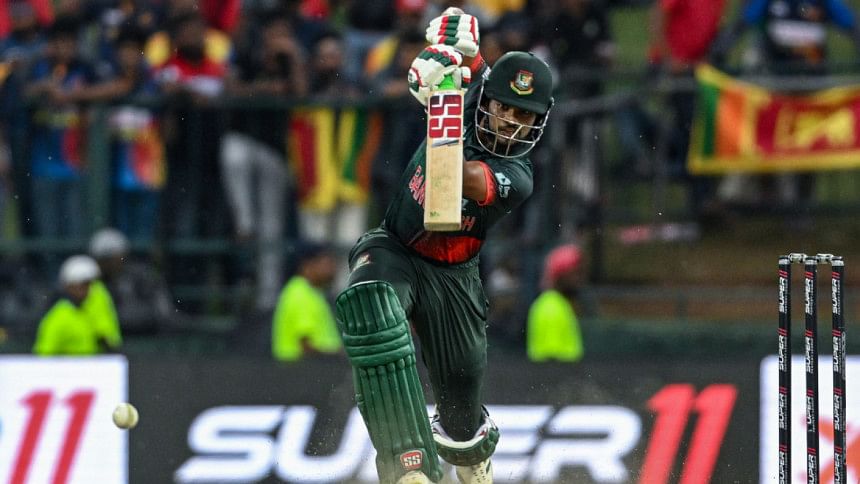How well will the Tigers deal with change?

Asia Cup tournaments in the last decade or so have become Bangladesh's comfort zone. Since 2012 – the first year Bangladesh ascended to the final of the tournament – there have been five editions. Bangladesh played three of those finals. However, unlike the women's team, the men have not seen nearly as much success.
Bangladesh's performance in the 2007 World Cup is cited by many as a turning point in its cricketing journey. Before then, Bangladesh had had some success – such as the win in 2005 against Australia – but they could mostly be dismissed as upsets. When the Tigers beat India in 2007, it seemed to be a sign of something big to come, but what could only be proven with time. There was something about Tamim Iqbal dancing down the wicket against the formidable bowler, Zaheer Khan, that showed a dash of daring that our players had found difficult to conjure before then. In 2010, Bangladesh beat New Zealand 4-0 in a home series. In 2012, it won one nerve-wracking match after another to get to the finals in the Asia Cup, only to succumb to the most heartbreaking loss our country has seen in cricket. Victories started becoming much more of a norm, especially in the homeground. Throughout this solidifying period of Bangladeshi cricket, we came to rely on four great talents – people we grew to be regarded as gifted, not merely as skilled cricketers. Shakib Al Hasan, Tamim Iqbal, Mushfiqur Rahim, and Mahmudullah Riyad found their individual places in the lineup and functioned as a tight-knit unit often led by the most magnetic leader, Mashrafe Mortaza. They were supported by a rotating crop of cricketers who seemed bolstered by the force of the unit itself. There was a kind of chemistry among these core players that threaded together the playing eleven. Of late, though, many would say that this coherence in the team has been missing.
We saw Tamim Iqbal miss out on a few major tournaments, despite being the ODI captain, due to injuries. Both Mahmudullah and Mushfiqur suffered from wavering forms, which eventually saw the former not making the cut for the Asia Cup squad. It can therefore be inferred that Mahmudullah possibly will not feature in the World Cup, either. At 37 years of age, Mahmudullah Riyad's contribution to Bangladeshi cricket might have reached its conclusion. While Shakib leaves nothing to be said about his consistent performances on-field – either with the bat or the ball – one can only imagine how much better things could be if he was also as unifying a leader as he is mesmerising as a player.
In Bangladesh's first Asia Cup 2023 match against Sri Lanka, hopes were high. New and young players have made their way into the squad, many of whom were a part of the U-19 World Cup winning team. Eventually, it will be these players who take Bangladeshi cricket forward. But as we go through this transitory period, where we take the best that the oldest still have to offer, empowering the future talents may inevitably be a rocky experience. Aside from the technical details that denote success and failure, a zoomed-out view provides a more traceable journey for a team.
It is worth mentioning that, on Thursday, Sri Lanka were missing four of their key bowlers. Yet, a dazzling performance by youngster Matheesha Pathirana outdid even our most senior batters. Pathirana, who is only 20 years old, caught the eye of MS Dhoni when the bowler's video – showing his bowling action that uncannily resembles Lasith Malinga's – went viral on social media. He has played for Chennai Super Kings in the IPL, yielding much success for his team.
On the other hand, our lone performer of the day was Nazmul Hossain Shanto, a man who has been in tremendous form for the whole year, reminiscent of Liton Kumar Das' run in 2022. Sometimes, all it takes is one great performer. But more often than not, cricket continues to be a team sport. With Tamim's injury, Liton's fever, and Riyad's exclusion, the average age and experience of the Bangladesh team suddenly seems dauntingly low.
Still, Bangladesh has a chance to make it to the Super Fours by beating Afghanistan. There seems to be a hum of anxiety in and around the team. But if this can be muted out, the strengths of the Tigers can come to the forefront of the performances. There are match winners like Mehidy Hasan Miraz, momentum shifters like Taskin Ahmed, and surprise packages like Mustafizur Rahman. ODI cricket has been our strength; it is a format we have figured out how to excel in. A day's bad performance does not necessarily have to be indicative of how the rest of the tournament will go for the Bangladesh team.
While blind optimism is helpful to no one, the new reality must be accepted – these are our players, their calibre is defined by what they bring out on the field, and it is them who we have to back. Things will change, and perhaps in the near future, things will change even faster than at present. How much resilience the Tigers bring forward to deal with these changes will ultimately define the next stretch of Bangladeshi cricket.
Madiha Athar Khan is a technical writer at Optimizely and an art enthusiast leading the Art for Soul movement. She can be reached at [email protected].
Views in this article are the author's own.
Follow The Daily Star Opinion on Facebook for the latest opinions, commentaries and analyses by experts and professionals. To contribute your article or letter to The Daily Star Opinion, see our guidelines for submission.

 For all latest news, follow The Daily Star's Google News channel.
For all latest news, follow The Daily Star's Google News channel. 








Comments